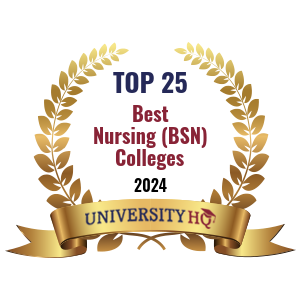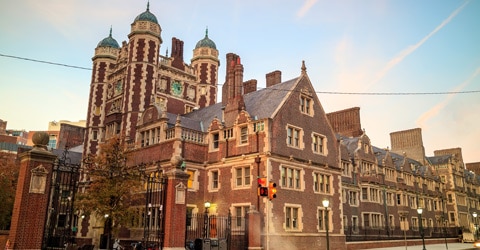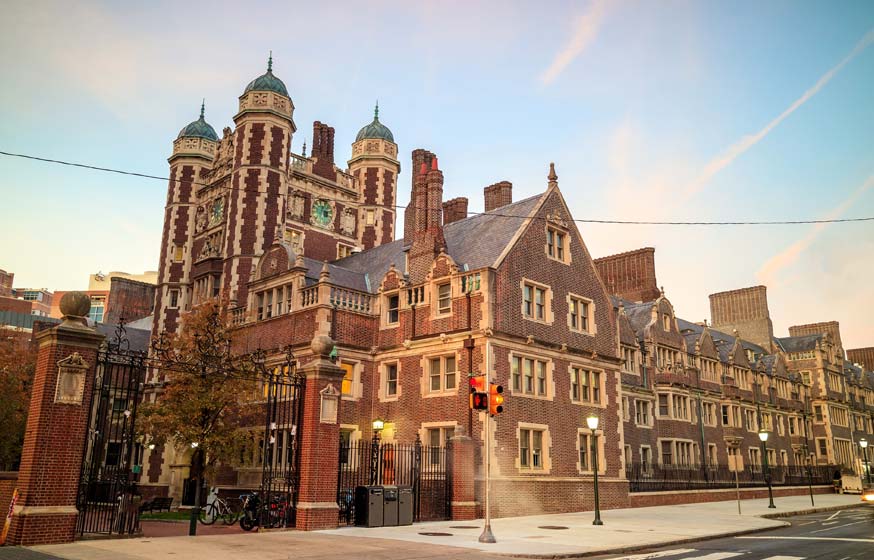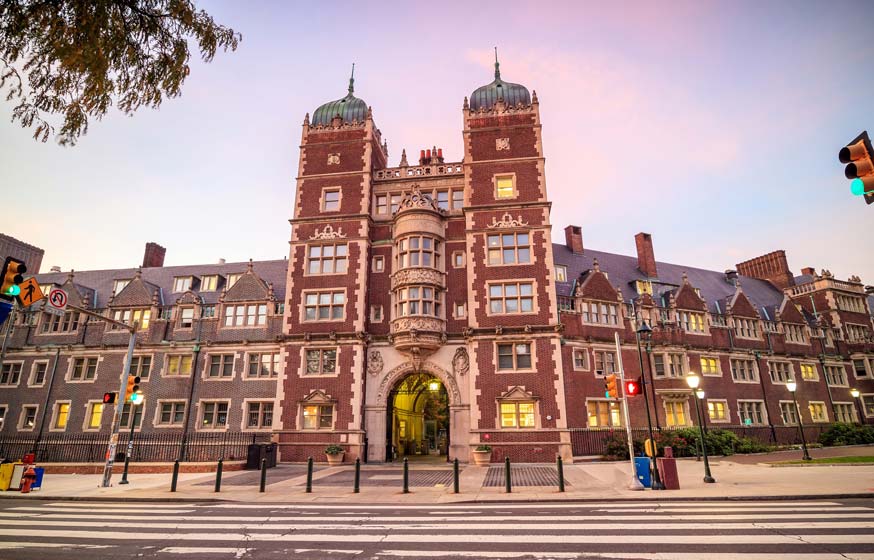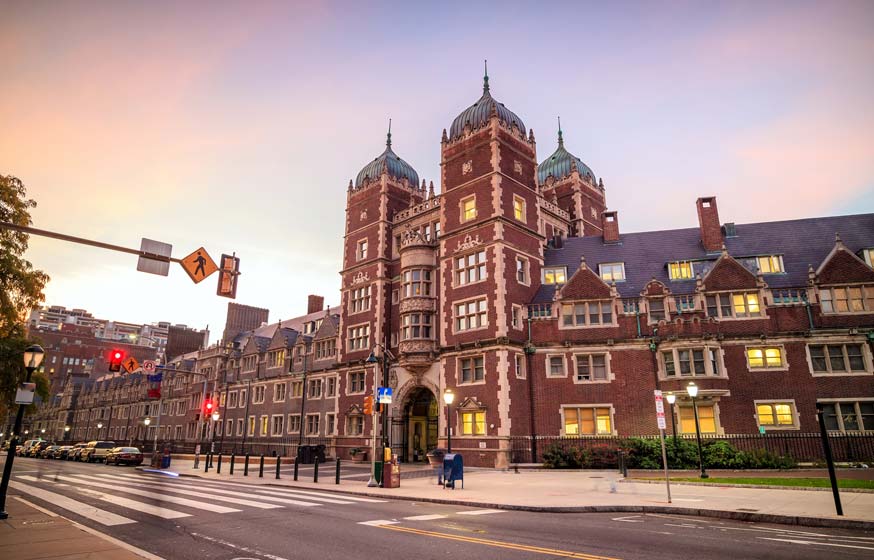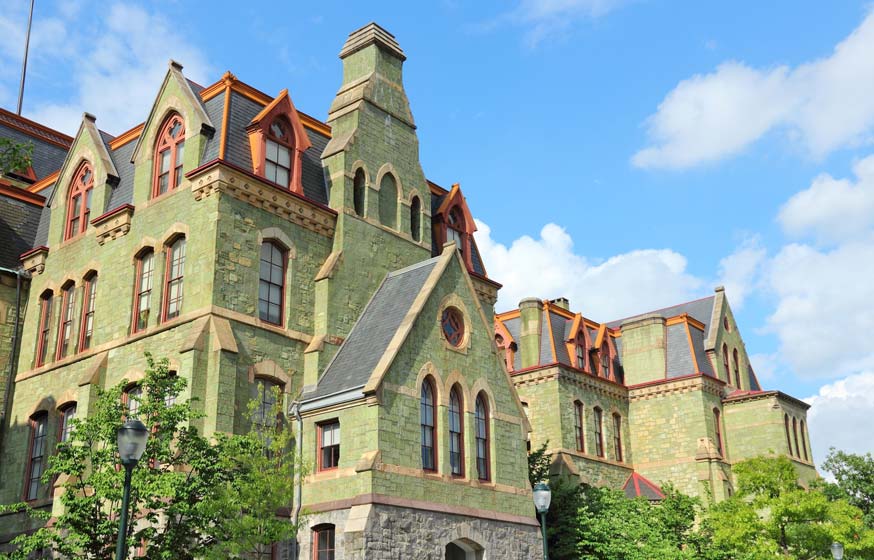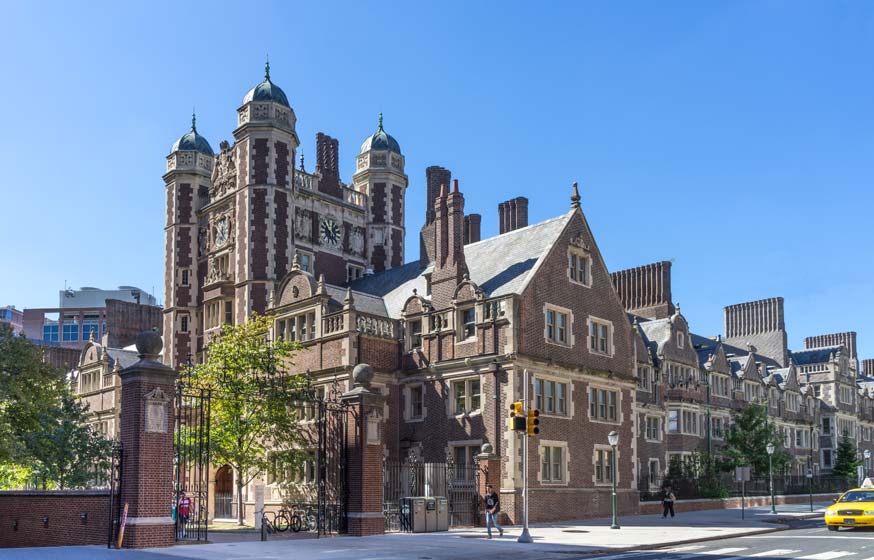Get Matched With Online Colleges
The University of Pennsylvania, located in Philadelphia, is a private, not-for-profit institution of higher education. Founded in 1740, this campus houses several well-known colleges, such as the Annenberg School for Communication and the Wharton School. The UofP’s doctoral universities hold a Carnegie classification of “very high research activity”.
Overview of University of Pennsylvania (UPenn)
As historical as Philadelphia is, students will be able to visit several sites of interest, such as the Liberty Bell. The university has a total enrollment of 25,80+0, with 11,800+ students in the undergraduate class and 14,000+ students enrolled in graduate programs. Female students make up 54% of the student body, with males making up the remaining 46%. the student-faculty ratio is 6 to 1, giving instructors and students ample time to meet with each other.
Campus housing is available for students who prefer living on-campus. For non-traditional students who are already working, both distance learning (online classes) and evening classes are good options. This may work for both undergraduate and graduate students, depending on their individual situations. For students who want an opportunity to enter the military, ROTC programs (Army, Air Force, and Navy) are available.
General Information
| School Type | Private not-for-profit |
|---|---|
| Campus Setting | City: Large |
| Campus Housing | Yes |
| Student Faculty Ratio | 6:1 |
| Graduation Rate | 95% |
| Year Founded | 1740 |

Student Enrollment
Total Students25,860
11,851
14,009
Undergraduate Student
Male 5,451
Female 6,400
Graduate Student
Male 6,444
Female 7,565
Explore Map
Top Rankings For University of Pennsylvania
UPenn Acceptance Rate and Admissions
APPLICATION44,491
ACCEPTANCE3,559
Acceptance Rate8%
Enrollment 2,385
| Admissions | |
|---|---|
| Application Fee | $75 |
| High School GPA | Required |
| High School Rank | N/A |
| High School Transcripts | Required |
| College Prep Courses | Recommended |
| Recommendations | Required |
| SAT/ACT | Required |
| TOEFL (Test of English as a Foreign Language) | Recommended |
| Application Deadline | January 5 |
| Common Application Accepted | Yes |
UPenn Tuition Cost & Financial Aid
For students at the University of Pennsylvania, college tuition, fees, and books are expensive. The price tag works out to around $59,100 for a recent academic year. Financial aid is a necessity, whether it comes from grants, scholarships, or even student loans.
Families might do well to look at the average net price, which is the amount of money remaining after financial aid has been applied to the full bill (tuition, fees, and books). The average net price for UofP families is $26,266. For a recent academic year, families were responsible for the following net prices based on their incomes: Families who earned up to $30,000 paid $4,440 for their tuition bill; families with incomes of $30,001 to $48,000 paid $5,305; families whose income was $48,001 to $75,000 paid $12,552; families whose income was $75,001 to $110,000 paid $21,496; and families whose income was above $110,001 paid $41,033.
Student financial aid was awarded to 1,387 freshmen: about 58%. Grants or scholarships went to 1,135 first-year students, or 47% of students. And institutional grants and scholarships were awarded to 1,127 first-year students – also about 47%.
| Average net price | 2017-2018 |
|---|---|
| Net Price | $26,266 |
| Average Total Aid | $46,318 |
| Students Receiving Financial Aid | 58% |
| Room & Board | $16,190 |
Sticker Price
- Tuition In-State - $57,770
- Tuition Out-of-State - $57,770
- Books and Supplies - $1,358
- Room & Board - $16,190
- Other - $1,946
Academics
The university’s retention rate is 98% - this means that 98% of all first-time students returned to the University of Pennsylvania for their second academic year. This is vital because it proves that students and their families believe they are receiving a high-value education in return for the money they have paid. The low student-to-faculty ratio (6 to 1) may figure into this, allowing students to gain easy access to their professors.
The four-year graduation rate is 85% and the six-year graduation rate is 95%. More and more students find it is necessary to stay in school beyond their fourth year. They may not be able to finish their entire degree program within four years. Because of this, they extend their stay in school until they complete their degrees.
Looking at the most popular majors, these include: business, engineering, social sciences, biological and biomedical sciences, communication, journalism and related programs, computer and information sciences and support services, education, engineering, health professions and related programs, multidisciplinary studies, philosophy and religious studies, social sciences, and visual and performing arts. Choosing a major in an area that’s important to them enables them to make a difference after graduation.
Retention
Rate
4 year
Graduation
Rate
6 year
Graduation
Rate
Student Population Total
Student Population 25,860
11,851
14,009
Most Popular Programs & Majors
(# of Diplomas Awarded by Subject)
| All Business Majors | 609 Total Graduates / 21% |
|---|---|
| Finance, General | 356 Graduates |
| Business Administration and Management, General | 74 Graduates |
| Marketing/Marketing Management, General | 66 Graduates |
| Management Science | 63 Graduates |
| Management Sciences and Quantitative Methods, Other | 28 Graduates |
| All Social Science Majors | 424 Total Graduates / 14% |
| Political Science and Government, General | 133 Graduates |
| Economics, General | 122 Graduates |
| International Relations and Affairs | 53 Graduates |
| Econometrics and Quantitative Economics | 31 Graduates |
| Urban Studies/Affairs | 26 Graduates |
| All Biological & Biomedical Majors | 289 Total Graduates / 10% |
| Biology/Biological Sciences, General | 139 Graduates |
| Neuroscience | 114 Graduates |
| Biochemistry | 21 Graduates |
| Biophysics | 10 Graduates |
| Biomedical Sciences, General | 5 Graduates |
| All Engineering Majors | 286 Total Graduates / 10% |
| Mechanical Engineering | 86 Graduates |
| Bioengineering and Biomedical Engineering | 51 Graduates |
| Systems Engineering | 45 Graduates |
| Chemical and Biomolecular Engineering | 29 Graduates |
| Electrical and Electronics Engineering | 24 Graduates |
| Health Professions and Related Programs | 283 Total Graduates / 10% |
| Registered Nursing/Registered Nurse | 176 Graduates |
| Community Health Services/Liaison/Counseling | 90 Graduates |
| Health/Health Care Administration/Management | 17 Graduates |
| All Other Diplomas | 35% |
Outcome & Salary
Students who graduate from the University of Pennsylvania should be able to anticipate a good living. This is their return on investment (ROI) for the funds they paid into their university education, which is what makes attending this institution a good choice.
The early-career salary for graduates of the University of Pennsylvania is $75,000; average salary is $82,000; and their mid-career salary is $149,000. Looking at ROI, the 10-year earnings potential is $820,000; the 20-year earnings potential is $2,315,000.
Compare this to high school graduates who don’t go to college. Their average national salary is $38,792; 10-year projected income is $387,920, and their 20-year projected income, $775,840.
| Graduates Salary | |
|---|---|
| College Grads Early Career Salary | $75,000 |
| College Grads Average Salary | $82,000 |
| College Grads Mid Career Salary | $149,500 |
| Return on Investment (ROI) | |
|---|---|
| 10 Year Salary Earnings Potential | $820,000 |
| 20 Year Salary Earnings Potential | $2,315,000 |
| Cost of Education (Net Price) 4 Year | $105,064 |
| 10 Year Projected ROI | $714,936 |
| 20 Year Projected ROI | $2,209,936 |
| No College Education Salary Comparison | |
|---|---|
| National Average Salary | $38,792 |
| 10 Year Projected Income | $387,920 |
| 20 Year Projected Income | $775,840 |
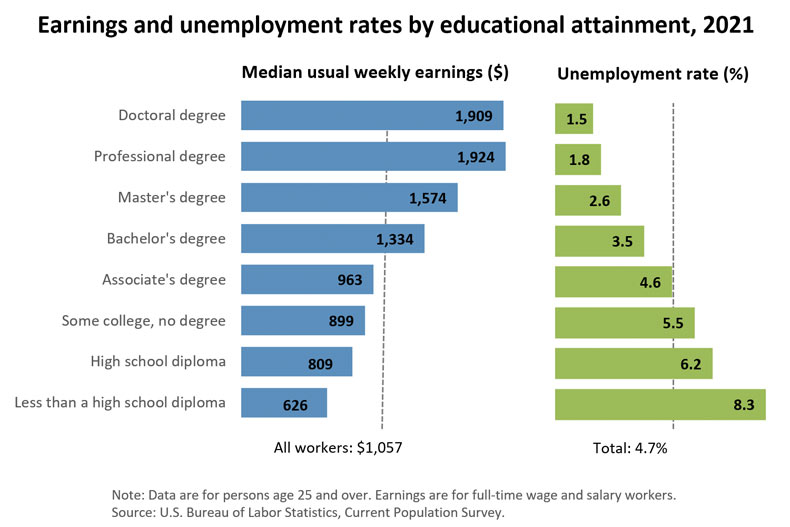
Related Top College Resources


















